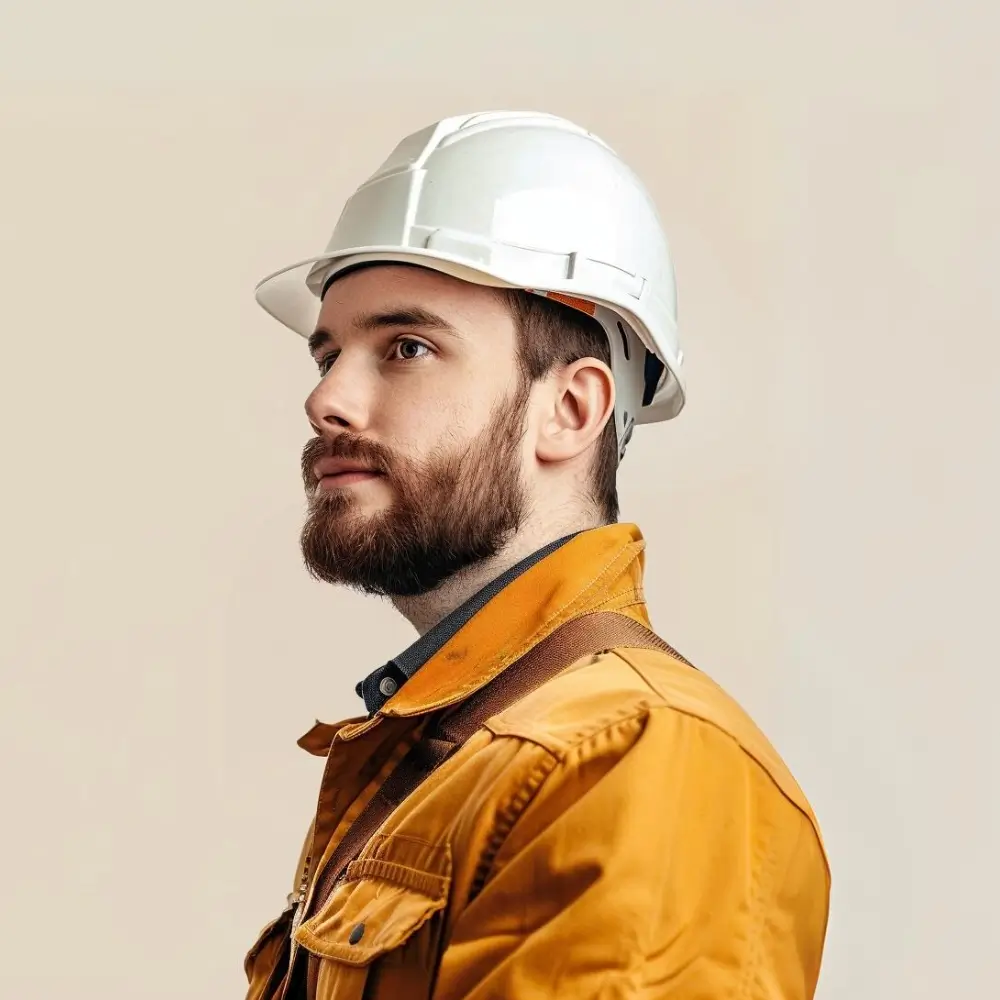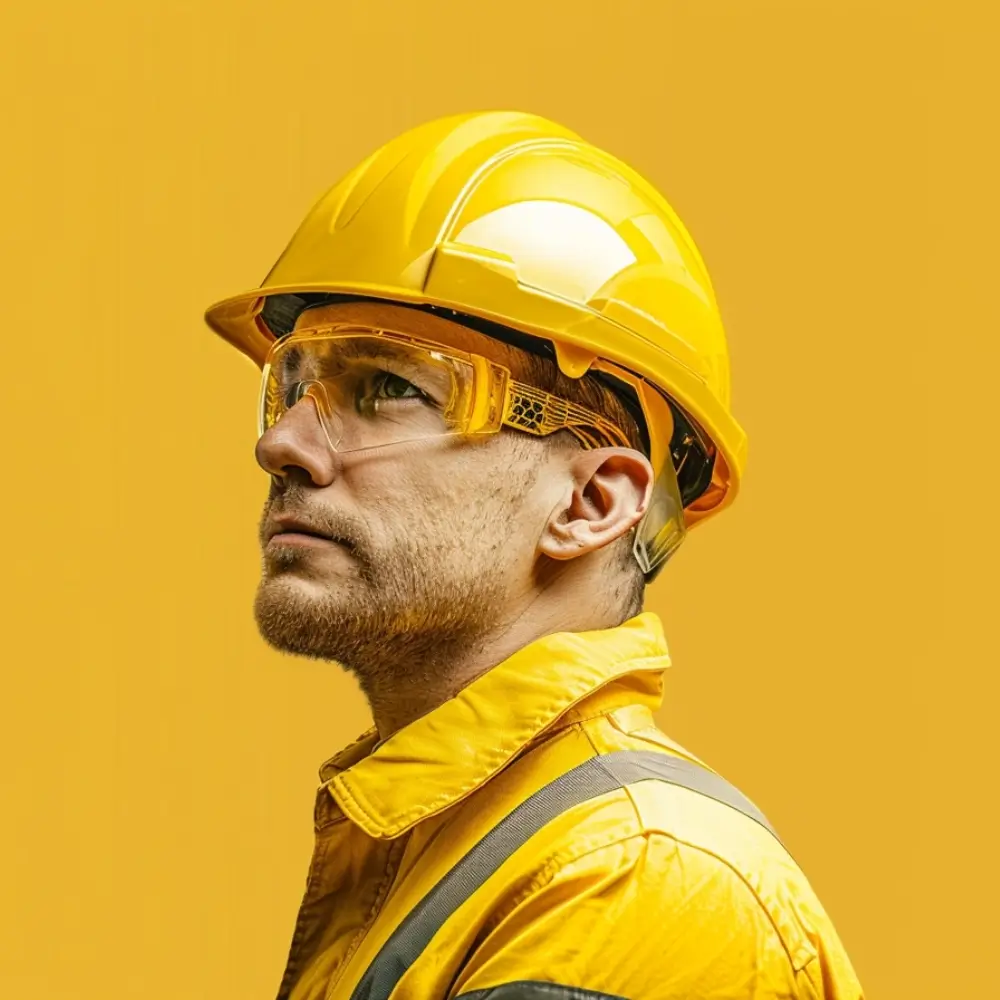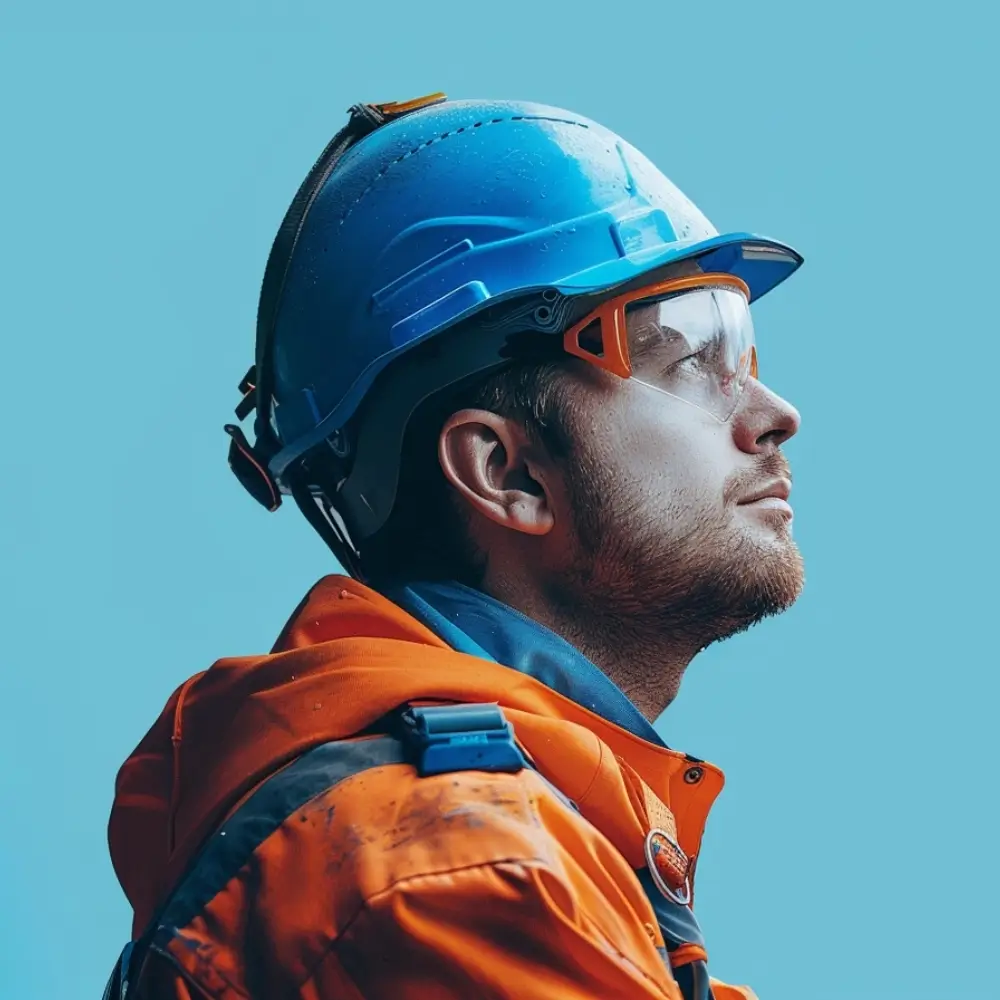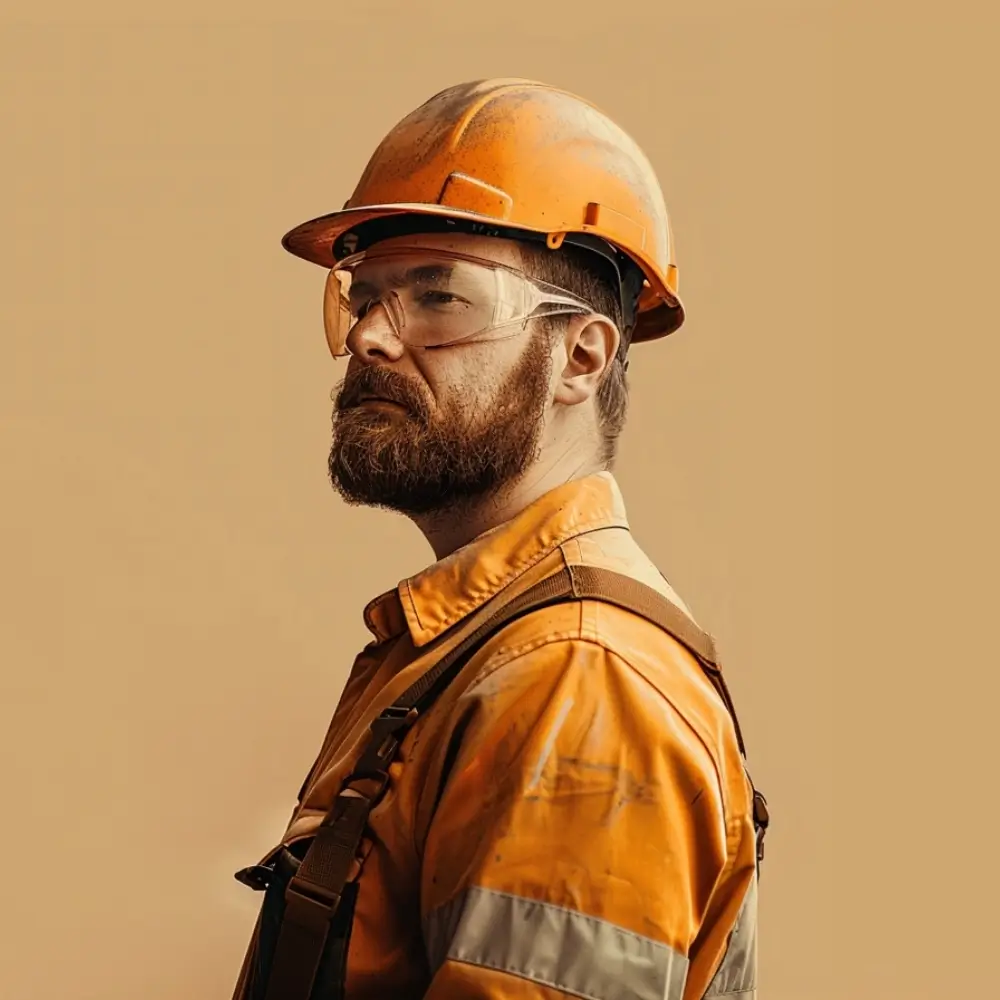Whenever you visit any construction site, you see the workers wearing different-colored hard hats. Each hard color has a purpose and meaning. Each color indicates the worker’s roles and responsibilities.
OSHA has some rules about using hard hats but doesn’t have any rules about choosing the color. While the colors of the hard hats have not been standardized, most companies and general contractors follow the same color coding of hard hats for their workers.
This blog post will discuss the different hard hat colors and their meanings.
What’s Hard Hat and Its Importance
Hard hats are a type of helmet predominantly used in workplaces like construction sites to protect the head from injury due to falling objects, debris, or impacts with other hazards. They are an essential part of personal protective equipment (PPE) in many industries where there’s a risk of head injuries. Hard hats are typically made from durable materials such as high-density polyethylene (HDPE) or fiberglass and often feature a suspension system inside to absorb shock and provide a comfortable fit. They can also come with additional features like face shields, ear protection, or built-in lights for enhanced safety and functionality.
Hard hats are important because they protect your head from injuries. A hard hat is basically a helmet that is made out of hard materials like plastic or metal. It protects your head from impact, falling objects, and other hazards.
Hard hats are important for a number of crucial reasons:
- Protection from falling objects: Materials, tools, or debris that could fall from heights are often found at construction sites and other industrial areas. A hard hat can absorb the impact and prevent serious head injuries.
- Protection from impacts: Even if something isn’t falling from a great height, bumping your head against fixed objects like beams, scaffolding, or low ceilings can be dangerous. Hard hats provide a buffer, reducing the force of these impacts.
- Electrical shock protection: Some hard hats (those designed for electrical work) provide insulation from electrical conductors, protecting workers from shock.
- High visibility: Hard hats, especially brightly colored ones, make workers more visible, reducing the risk of accidents involving vehicles, moving equipment, or other hazards.
- Professionalism: In some industries, hard hats are a symbol of safety and following protocol. Wearing one helps establish a professional, safety-focused work environment.
Purpose Of Hard Hats Color Codes
Helmet color codes serve several important purposes in various industries, primarily in construction, manufacturing, and other high-risk work environments. These color codes help enhance safety, communication, and organization on job sites by providing quick visual cues. Here are some of the main purposes of helmet color codes:
- Identification: Helmet color codes help quickly identify the role, job function, or qualifications of the wearer. This can be especially useful on large job sites with numerous workers, subcontractors, and visitors.
- Safety: Different colors can signify different levels of training, expertise, or certifications. This ensures that individuals with specific skills or knowledge are assigned appropriate tasks, reducing the risk of accidents or injuries.
- Communication: Workers and supervisors can easily identify colleagues with specific skills or roles by their helmet colors. This facilitates communication and coordination on job sites, making it easier to assign tasks and respond to emergencies.
- Emergency Response: In the event of an emergency, such as a fire or medical situation, helmet color codes help emergency responders quickly identify key personnel, such as safety officers or medical teams.
- Training and Compliance: Helmet colors can also indicate a worker’s training level or compliance with safety regulations. For example, a green helmet might indicate a new employee undergoing training, while a red helmet could signify a safety inspector.
- Visitor and New Employee Recognition: Visitors or new employees who haven’t been assigned a specific role yet can be easily recognized by their helmet color, helping site personnel provide appropriate guidance and supervision.
- Management and Supervision: Certain colors, such as white or blue, are often reserved for managers, supervisors, engineers, and professionals who oversee and coordinate activities on the job site. This helps distinguish them from frontline workers.
It’s important to note that while there are some common conventions for helmet color codes, these codes can vary from one organization, industry, or region to another. Therefore, it’s essential to consult the specific guidelines and policies of your workplace or industry to accurately interpret the meaning of helmet colors in your context.
Hard Hat Color Codes and Their Meanings
Hard hat color codes and their meanings can vary by region, industry, or company. However, some general conventions are often followed in the construction and industrial sectors. Keep in mind that these codes may not be universal, so it’s crucial to check with your specific workplace or organization for their specific meanings.
Here are some common hard hat color codes and their typical interpretations:
1. White Hard Hat

In many workplaces, white hard hats are worn by people in supervisory roles, such as:
- Site managers
- Engineers
- Foremen
- Supervisors
It’s a way to visually distinguish them on the worksite from those carrying out other tasks. However, it’s important to note that hard hat color coding isn’t universally standardized and can vary depending on the specific company or worksite.
2. Yellow Hard Hat

Yellow hard hats are typically worn by general labourers on a construction site. This could include people performing tasks like:
- Carrying materials
- Using basic tools
- Cleaning up debris
Essentially, if someone is doing general construction work, they’ll likely be wearing a yellow hard hat.
3. Blue Hard Hat

Blue hard hats are often worn by:
- Technical operators: Electricians, carpenters, plumbers, etc.
- Visitors: Anyone touring the site or who doesn’t have a more defined role.
- Apprentices: Individuals who are learning and training on the job.
It’s important to remember that hard hat colour codes can vary between different companies and worksites.
4. Green Hard Hat

Green hard hats are typically worn by:
- Safety inspectors: They ensure the worksite follows safety regulations and protocols.
- New workers or probationary staff: Green can help identify these individuals as they might need additional guidance or supervision.
While these are common associations, it’s crucial to remember that hard hat colour coding systems are not universal. Standards can vary between countries, industries, and even individual companies. Always check a specific worksite’s rules to be sure.
5. Orange Hard Hat

Orange hard hats are most commonly worn by:
- Road crews: The high visibility of orange makes them easily identifiable by vehicles and traffic.
- Crane operators: Crane operators need to be extremely visible to ground workers and other equipment operators to avoid collisions and accidents.
- Slingers/Signallers: For communication and safety reasons, people directing the movement of heavy loads need to be easily spotted.
6. Red Hard Hat

Red hard hats are primarily worn by fire marshals. The bright red color makes them easily identifiable in an emergency situation, like a fire. This allows people to quickly locate the person responsible for fire safety and evacuation procedures.
It’s important to note that fire marshals might also have a sticker or label on their hard hat that specifically identifies their role.
7. Brown Hard Hat

Brown hard hats are typically worn by workers involved in high-heat applications, such as:
- Welders: Welding torches produce intense heat and bright light. Brown hard hats can help shield welders’ eyes from the glare and protect their heads from sparks and debris.
- Cutting torch operators: Similar to welders, people using cutting torches encounter high heat and require protection for their eyes and head.
- Other high-heat workers: Brown hard hats might be used by workers in other roles that involve significant heat exposure, such as foundry workers or glassblowers.
The purpose of the brown colour is not inherently heat resistant but rather a visual indicator of the type of work being done and the potential hazards involved.
8. Grey Hard Hat

Grey hard hats are usually designated for:
- Site Visitors: People touring the construction site or other workplaces who are not actively involved in the ongoing work.
- Employees Needing a Replacement: Occasionally, grey hard hats might be given to employees who have misplaced their assigned hard hats, serving as a temporary solution.
The main idea behind the grey colour is to easily identify individuals who are not part of the regular work crew.
How to Choose a Hard Hat
Choosing the right hard hat is essential to ensure proper protection and comfort in the workplace. Here are some factors to consider when choosing a hard hat:
- Type of hazard: Consider the type of hazard you are exposed to in your workplace. For example, if you work in an environment with electrical hazards, you may need a hard hat rated for electrical protection.
- Material: Hard hats are made from different materials, such as fiberglass, ABS plastic, and high-density polyethylene (HDPE). Consider the material based on your job requirements and personal preferences.
- Comfort: A hard hat that is comfortable to wear for extended periods of time is important. Look for a hard hat that has adjustable straps, ventilation, and a comfortable suspension system.
- Size and fit: Hard hats come in different sizes, so choosing the right size for a proper fit is important. A hard hat that is too small or too large can be uncomfortable and may not provide adequate protection.
- Style: Hard hats come in different styles, including full-brim and cap style. Consider the style based on your job requirements and personal preferences.
- Certification: Look for a hard hat certified by the appropriate safety standards organization, such as the American National Standards Institute (ANSI) or the Canadian Standards Association (CSA).
Remember, a hard hat is an important piece of personal protective equipment (PPE) and should be chosen carefully to ensure proper protection and comfort in the workplace.
When Should You Wear a Hard Hat?
A hard hat is essential personal protective equipment (PPE) that is designed to protect the head from potential hazards in various workplaces such as construction sites, manufacturing plants, mining sites, and other industrial settings. It is important to wear a hard hat whenever there is a risk of head injury from falling objects, electric shock, or other types of hazards.
Some situations where you should wear a hard hat include:
- When working in areas where there is a risk of falling objects, such as construction sites or warehouses.
- When working in areas where there is a risk of head injury from low ceilings, protruding objects, or other hazards.
- When working with electrical equipment or near overhead electrical lines.
- When working in areas where there is a risk of exposure to chemicals, such as in a chemical plant or laboratory.
- When working in confined spaces where there is a risk of head injury from sharp or protruding objects.
It is important to remember that wearing a hard hat alone is not enough to ensure your safety. You should also follow proper safety procedures and use other appropriate personal protective equipment (PPE) for your specific job and workplace hazards.
When to Replace Your Hard Hat?
A hard hat is an important piece of personal protective equipment (PPE) designed to protect your head from potential hazards in the workplace. Over time, however, hard hats can become worn or damaged, compromising their ability to provide proper protection. Here are some signs that it may be time to replace your hard hat:
- Visible signs of damage: If your hard hat has cracks, dents, or other signs of damage, it may no longer be able to provide adequate protection.
- Faded or discolored shell: If the color of your hard hat has faded or become discolored, it may indicate that the hard hat has been exposed to sunlight for too long, which can weaken the material and compromise its protective properties.
- Suspension system damage: If the suspension system inside the hard hat is damaged or worn out, it may not be able to properly absorb impact and provide the necessary protection.
- Manufacturer’s recommendations: The manufacturer of your hard hat may have specific guidelines for when to replace it, based on its type and usage.
- Age: Hard hats have a limited lifespan, typically 2 to 5 years, depending on the type of hard hat and usage. Check your hard hat’s expiry date to ensure it is still within its recommended lifespan.
It is important to replace your hard hat when it shows signs of wear or damage to ensure that it can provide adequate protection in the event of a workplace hazard.
Conclusion
Hard hats are an essential piece of personal protective equipment that ensures workers’ safety in hazardous environments. The color codes on hard hats are crucial in communicating information about a worker’s role, level of expertise, and potential hazards. Understanding the meaning of each hard hat color code is vital for workers and employers to maintain a safe workplace.
By adhering to these color codes, workers can quickly identify potential dangers, communicate with other workers, and ensure their safety. Employers must ensure that workers wear the appropriate color-coded hard hats and provide appropriate training to reduce accidents and injuries in the workplace. By following the hard hat color codes, we can ensure workers return home safely daily.

